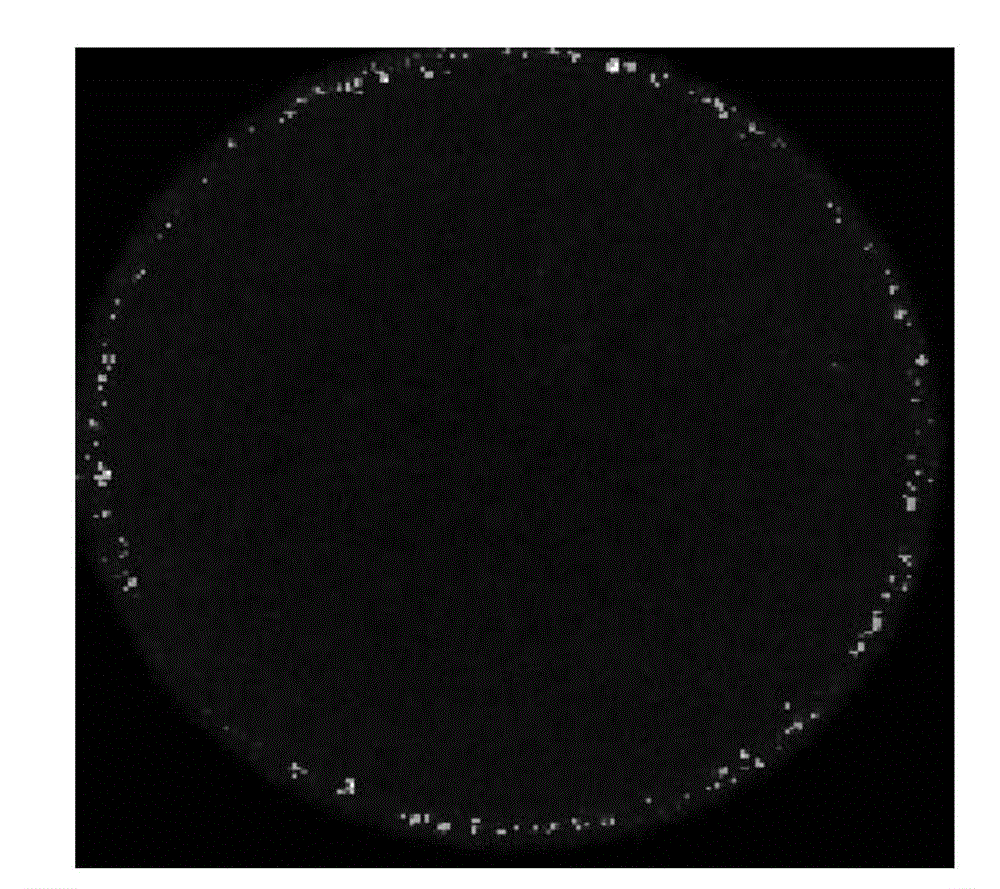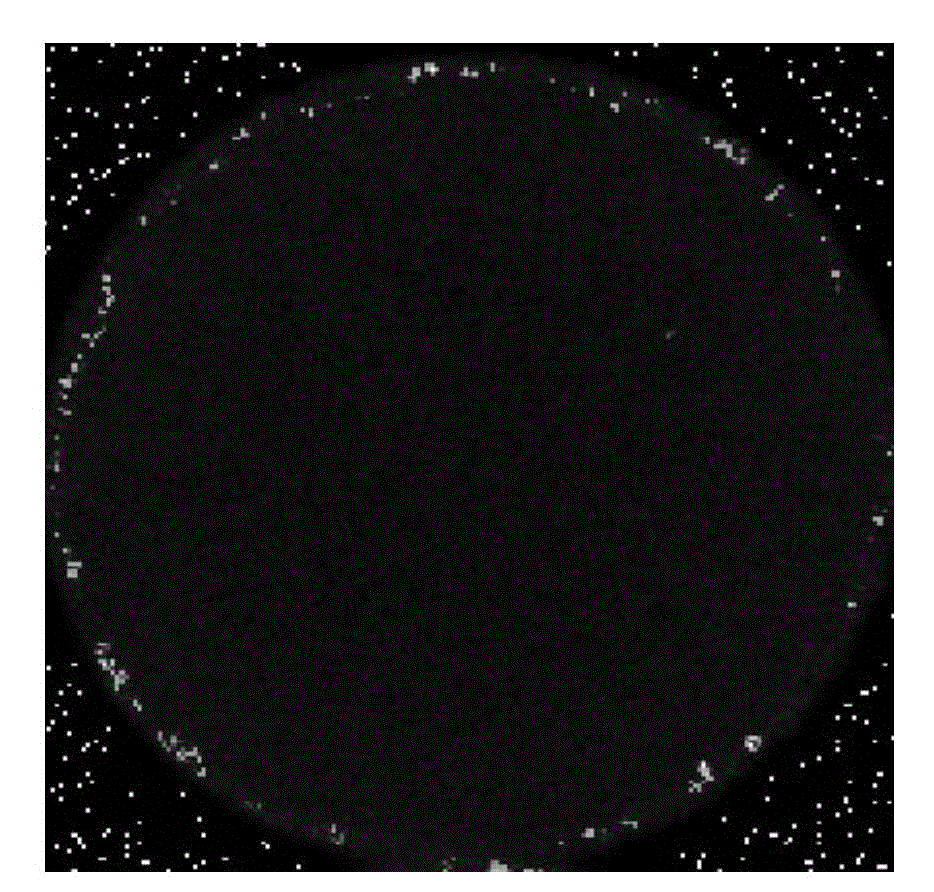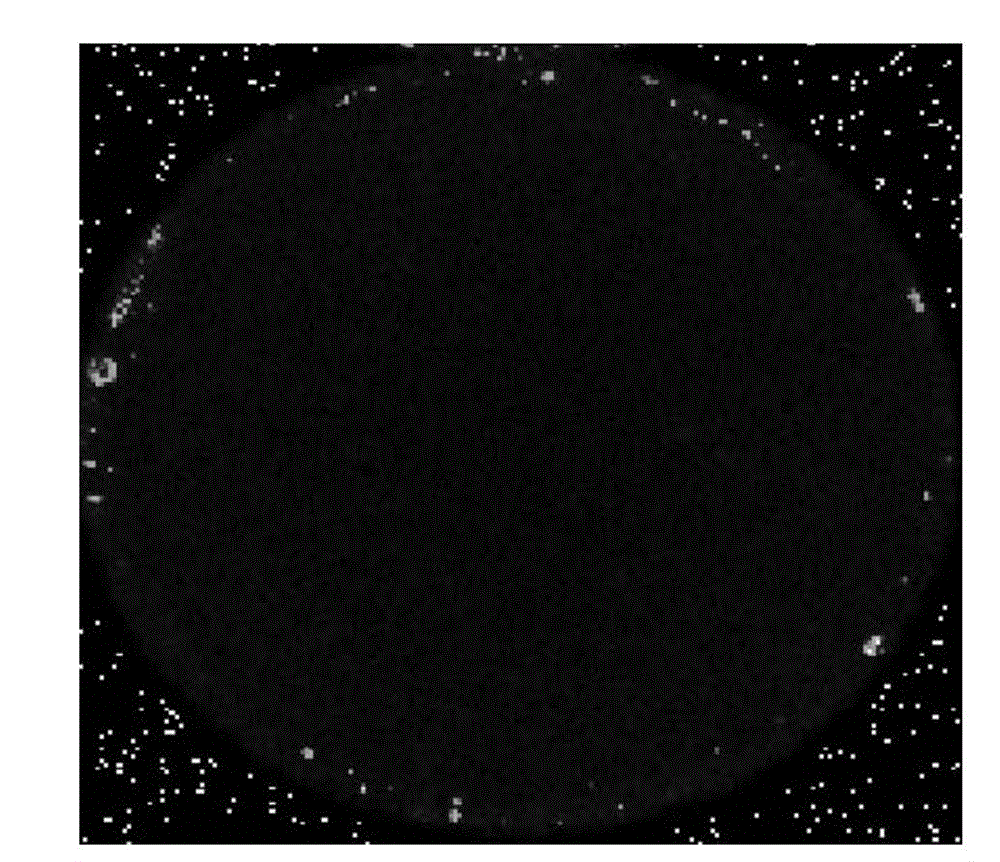Vacuum induction melting method for titanium-aluminum alloy target material
A vacuum induction melting, titanium-aluminum alloy technology, applied in vacuum evaporation plating, metal material coating process, ion implantation plating, etc. Advanced problems, to achieve the effect of low production cost, avoid alloy liquid splashing, and accurately control alloy composition
- Summary
- Abstract
- Description
- Claims
- Application Information
AI Technical Summary
Problems solved by technology
Method used
Image
Examples
Embodiment 1
[0030] The titanium-aluminum alloy target prepared in this example is composed of the following elements by weight percentage: Ti64%, Al36%.
[0031] The manufacturing method is as follows:
[0032] (1) Ingredients: Weigh grade 0 sponge titanium and metal aluminum with a purity higher than 99.99% according to the above alloy composition design.
[0033] (2) Baking material: Put the weighed raw materials titanium and aluminum into a vacuum oven (vacuum degree of 5000Pa), keep it warm at 100°C for 5h, cool down to 35°C with the furnace, and take it out for use.
[0034] (3) Furnace loading: put the metal aluminum in the baked raw material (ie furnace charge) into the bottom of the CaO crucible of a 25Kg vacuum induction furnace, and then loosely pack the titanium sponge on the upper part of the metal aluminum.
[0035] (4) Alloy melting: first, keep the vacuum degree of the vacuum induction furnace at 0.03Pa, and then send electricity with an electric power of 15KW. After 14 mi...
Embodiment 2
[0044] The titanium-aluminum alloy target prepared in this embodiment is composed of the following elements by weight percentage: Ti60%, Al40%.
[0045] The manufacturing method is as follows:
[0046] (1) Ingredients: Weigh grade 0 sponge titanium and metal aluminum with a purity higher than 99.99% according to the above alloy composition design.
[0047] (2) Baking material: Put the weighed raw materials titanium and aluminum into a vacuum oven (vacuum degree of 5000Pa), keep it warm at 140°C for 4h, cool down to 38°C with the furnace, and take it out for use.
[0048] (3) Furnace loading: put the metal aluminum in the baked raw material (ie furnace charge) into the bottom of the CaO crucible of a 25Kg vacuum induction furnace, and then loosely pack the titanium sponge on the upper part of the metal aluminum.
[0049] (4) Alloy melting: firstly, keep the vacuum degree of the vacuum induction furnace at 0.04Pa, and then transmit electricity with an electric power of 13KW. Af...
Embodiment 3
[0054] The titanium-aluminum alloy target prepared in this embodiment is composed of the following elements by weight percentage: Ti70%, Al30%.
[0055] The manufacturing method is as follows:
[0056] (1) Ingredients: Weigh grade 0 sponge titanium and metal aluminum with a purity higher than 99.99% according to the above alloy composition design.
[0057] (2) Baking materials: Put the weighed raw materials titanium and aluminum into a vacuum oven (vacuum degree of 5000Pa), keep it warm at 140°C for 4h, cool down to 36°C with the furnace, and take it out for use.
[0058] (3) Furnace loading: put the metal aluminum in the baked raw material (ie furnace charge) into the bottom of the CaO crucible of a 25Kg vacuum induction furnace, and then loosely pack the titanium sponge on the upper part of the metal aluminum.
[0059] (4) Alloy melting: firstly, keep the vacuum degree of the vacuum induction furnace at 0.02Pa, and then transmit electricity with an electric power of 15KW. A...
PUM
| Property | Measurement | Unit |
|---|---|---|
| particle size | aaaaa | aaaaa |
Abstract
Description
Claims
Application Information
 Login to View More
Login to View More - R&D
- Intellectual Property
- Life Sciences
- Materials
- Tech Scout
- Unparalleled Data Quality
- Higher Quality Content
- 60% Fewer Hallucinations
Browse by: Latest US Patents, China's latest patents, Technical Efficacy Thesaurus, Application Domain, Technology Topic, Popular Technical Reports.
© 2025 PatSnap. All rights reserved.Legal|Privacy policy|Modern Slavery Act Transparency Statement|Sitemap|About US| Contact US: help@patsnap.com



